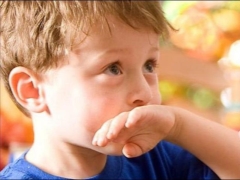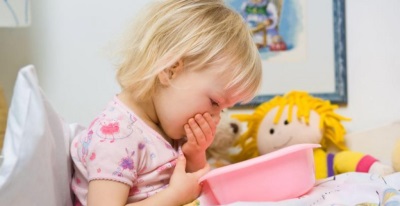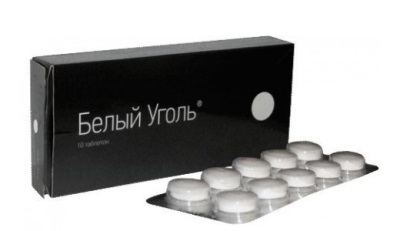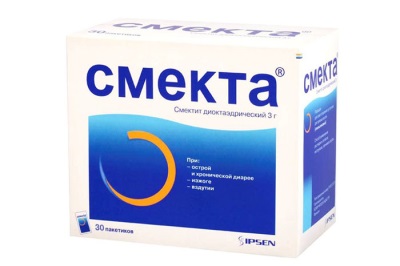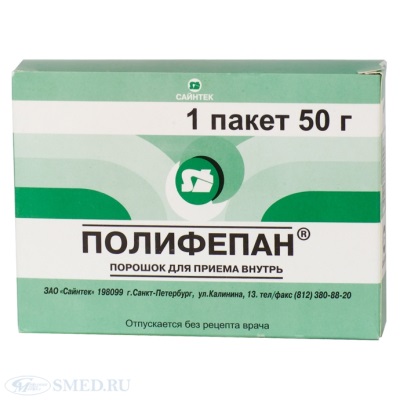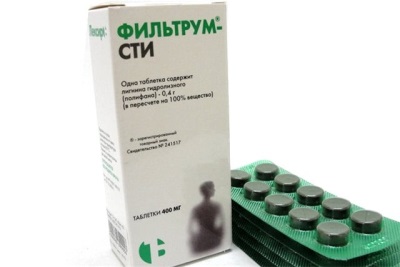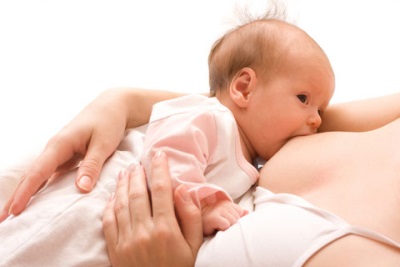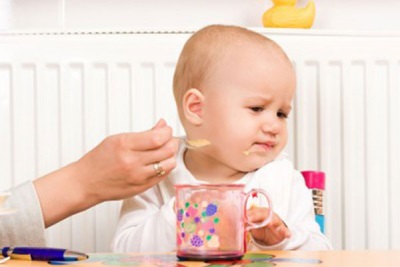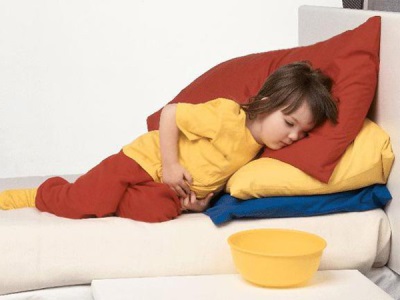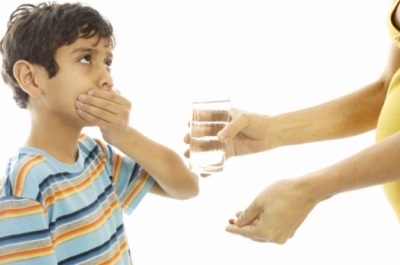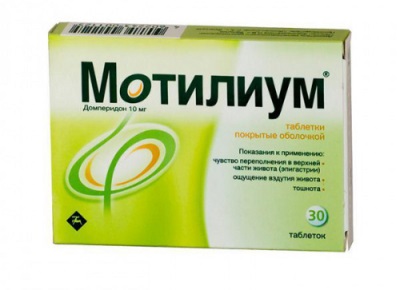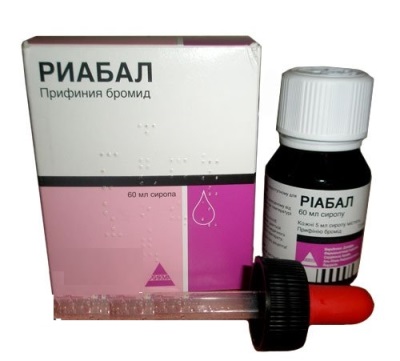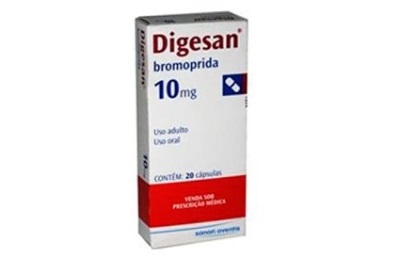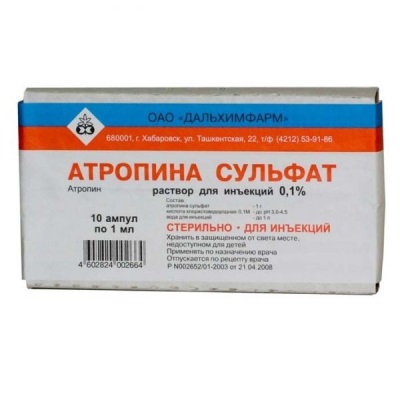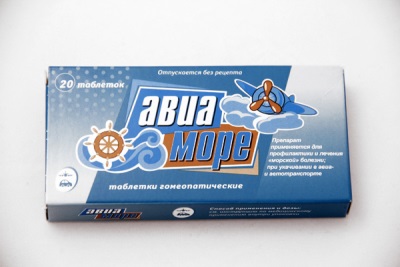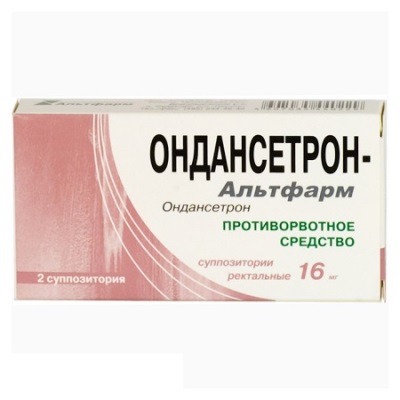Overview of antiemetic drugs for children
Vomiting is a protective reflex that every child has. The cause of vomiting are intestinal infections, and cranial injuries, and the use of stale products, and meningitis or other pathologies. Usually, before vomiting, a child may experience dizziness, weakness, blanching of the skin, rapid breathing, increased saliva and other symptoms.
The main danger of vomiting is dehydration, which in children occurs fairly quickly. Also, vomited mass can get into the respiratory tract. And because in some cases it is important to stop vomiting as soon as possible.
First aid for children with vomiting at home
First of all, parents should reassure the child. It is also important to keep calm and the adults themselves, so that their panic does not frighten the baby. Next, it is important to determine whether the child needs urgent medical care.
Call the pediatrician on the house in such cases:
- Age of the child up to three years.
- Attacks of vomiting are constantly repeated throughout the day.
- Along with vomiting, a child has fever and diarrhea.
- The baby is sluggish and weak.
- The child refuses to drink.
- A rash appeared on the baby’s skin.
- In the vomit there are impurities of bile or drops or streaks of blood.
We recommend watching a video in which the pediatrician advises parents on what to do when vomiting a child:
An ambulance call is necessary if:
- In the respiratory tract of the child were vomit.
- Vomiting triggered by a foreign body in the lumen of the esophagus.
- Vomiting is one of the symptoms of a head injury.
- The child is unconscious or confused.
- The kid complains of acute abdominal pain.
- Vomiting was more than 4 times in the last 2 hours.
Sorbents
The safest and most popular means used for vomiting in children are sorbents. They absorb toxins and remove them from the children's body, therefore, they are most often used for intestinal infections and various poisonings.
These drugs are approved for use in children of any age and do not inhibit the normal intestinal bacterial flora.
To the group of sorbents include such drugs:
- Activated carbon. This is the most affordable version of the sorbent, which should be kept in a home first aid kit. Due to its porous structure, this tool quickly absorbs toxic compounds and is safe for babies. The drug is represented by black tablets, the number of which is dosed based on the weight of the child.
- White coal. The sorption properties of this type of coal are much higher, so it is used in a lower dosage. In addition, this drug does not provoke constipation, but on the contrary, has a positive effect on intestinal motility. White coal is produced in tablets. Annotation to the remedy does not recommend giving it to children under 14, but the attending physician may prescribe white coal at an earlier age if he sees more benefit than risk from using this sorbent.
- Smecta. Such a medicine, harmless to children of any age, not only absorbs toxic substances, but also envelops the mucous membrane, protecting it from irritation. The drug is a powder bag. To prepare the suspension, it can be diluted with water, compote or a mixture, as well as mixed with baby food.The only disadvantage of Smekta is such a side effect as constipation.
- Enterosgel. This sorbent is produced in the form of a gel and is approved for use from birth. Babies give it before feeding 6 times a day, 2.5 g, mixed with water or women's milk. If a child is 1 year old, Enterosgel is prescribed 7.5 g three times a day, and a single dosage is increased to 15 g for children over 5 years old.
- Polyphepan. This preparation in the form of powder or granules contains lignin, obtained from coniferous wood. It absorbs harmful substances and normalizes the work of the digestive tract. Means can be given to children under the year a teaspoon an hour before feeding three times a day. At the age of 1-7 years a single dose is a dessert spoon, and for children over 8 years old - a tablespoon of powder, which is diluted with water or washed down.
- Polysorb MT. The basis of this drug is silicon dioxide, which is able to adsorb toxic substances. The contents of the bag are mixed with water and given to the child, adjusting the dosage according to his body weight.
- Enterodez. Such a sorbent in powder form contains povidone. A suspension is prepared from it and given to children, calculating the required dose based on the weight of the baby.
- Filtrum STI. This lignin-based preparation is available in tablets, which are crushed and mixed with water before use. Babies who have not yet turned 3 are given half a tablet, and children 4 years and older receive a whole tablet three to four times a day.
Hunger
If the child has vomiting, they are usually afraid to feed him. The absence of several meals does not harm the child, but on the contrary, it is useful for intestinal illness or poisoning. However, not all children suffer fasting normally.
If we are talking about an infant, regular nutrition is important for their vital functions, so they do not take breaks in feeding babies with vomiting.
As for older children, requests for food in the periods between bouts of vomiting are advised to be met. If a child asks for food after vomiting, then he should offer it, but with some reservations:
- Portions should be small, so it is better to divide one meal into several and give food more often.
- Food the child needs to be given in a warm form.
- Preferably vegetarian dishes that will be easily digested.
- A good option would be freshly made mashed potatoes.
- Children after vomiting should not be given sweet food, since fast carbohydrates will provoke fermentation processes.
- Spicy and salty foods should also be eliminated from the diet.
- Do not offer your child after vomiting fatty or fried foods, because they will be an additional burden on the liver.
- Fresh fruit should not be given to babies, as their fiber will irritate the intestines. You can bake the child an apple, as a source of pectin.
- Dairy products are useful for babies after vomiting to restore the intestinal flora.
Drink
Pay attention to otpaivaniyu child - the most important task of every mother. Its implementation should begin even before the arrival of the doctor, since dehydration due to vomiting can be dangerous for young children. Crumbs should be given a small amount of liquid (a teaspoon or a few sips) every five minutes.
If the baby is throwing up drinking, otpaivanie continue. If a child wants to drink more, he should be given as much liquid as he can drink.
The approximate amount of drink that a child needs to give after vomiting is calculated based on his weight. - the mass in kilograms is multiplied by 75. So many milliliters of liquid are given to the baby within 4 hours after an attack of vomiting.
The best option for drinking vomit for children are rehydration solutions. They help to restore the balance of fluid and salt in the children's body, disturbed by an attack of vomiting. The most famous solutions are Oralit, Re-salt, Regidron. If they were not in the home first-aid kit or the nearest pharmacy, the mother can make a similar liquid on her own, pouring 2 tbsp of water into a liter of water. spoons of sugar, 1 teaspoon of salt, and 1 teaspoon of soda.
Children who refuse rehydration solutions can be offered any other drink. It can be weakly brewed tea, mineral water without gas, fruit compote, decoction of wild rose berries, infusion of raisins or other dried fruits.
The temperature of the proposed liquid crumbs should be close to the baby's body temperature, then it will be absorbed faster in the digestive tract and will not provoke repeated vomiting. If a son or daughter does not want to drink, try to persuade the child, because with a categorical refusal to drink, the only way to avoid dehydration is hospitalization.
Antiemetic medication
Before considering the drugs that help stop vomiting, it is important to note some features of their use. First of all, only a doctor should prescribe an anti-emetic drug.
It is unacceptable to purchase the tool yourself and give the baby after reading the instructions. First of all, due to the frequent occurrence of side effects from taking any anti-emetic medication. Since the agents of this group mainly act on the central receptors responsible for the gag reflex, they can cause dizziness, drowsiness, problems with eyesight, breathing, rhythm of heartbeats, and many others.
It is equally important to understand that anti-vomiting drugs cannot cure its cause, but only affect the symptom itself. If an antiemetic drug is given before the arrival of the doctor, it will be more difficult for the pediatrician to make a diagnosis, as well as to estimate the volume and nature of the vomit mass released during the attack.
It is equally important to understand that anti-vomiting drugs cannot cure its cause, but only affect the symptom itself. If an antiemetic drug is given before the arrival of the doctor, it will be more difficult for the pediatrician to make a diagnosis, as well as to estimate the volume and nature of the vomit mass released during the attack.
Overview of Anti-Vomiting Medicines
Zeercal. Such a drug, whose active substance is metoclopramide, acts on the emetic center and blocks it. The drug is available in tablets and ampoules. It is intended for children over 2 years old. The liquid form of Cerukul can be taken orally or be given an intramuscular injection. The dosage of the drug is determined by the doctor.
Motilium. This medicine helps to normalize the work of the digestive tract, therefore it is used for nausea, heartburn, bloating, vomiting and colic. It is produced both in tablet form (in the shell and for resorption), and in suspension (it is convenient to give it to young children). The active substance of the drug is domperidone, which suppresses the activity of the vomiting center and accelerates the transfer of food from the stomach to the intestines. The tool is prescribed from 2 years of age, and its side effects may be increased irritability and other symptoms of the nervous system. They pass as soon as the drug is stopped.
Riabal. This drug blocks the cholinergic receptors in the digestive tract, thereby reducing the tone of smooth muscles, and the secretion of digestive juices decreases. The drug is prescribed for vomiting, as well as for pain caused by gastrointestinal spasms. Syrup is approved for use in children from birth, and the tablet form - at the age of 6 years and older.
Bromopride. This antiemetic has an effect on the brain stem, and also improves gastrointestinal motility. It is represented by capsules, but is also available in candles in several dosages.
Atropine sulfate. This drug inhibits the vomiting center, and also reduces the secretion of digestive juices and lowers the tone of the digestive tract. It is presented with tablets and solution for injections or oral administration. The dosage of such a drug should be selected only by a competent doctor.
Domperidone. This drug is produced in the form of suppositories, as well as tablets for children over 5 years. It is convenient to apply candles at the expressed nausea and frequent attacks of vomiting. The dosage of the drug must be determined by the doctor, taking into account the age of the child and his weight.
Avia-Sea. This tool helps with vomiting, which is provoked by motion sickness and seasickness. The drug contains dimenhydrinate, approved for use in children older than a year.
Ondansetron. This antiemetic drug is used in chemotherapy, treatment with cytostatics, and after surgery to prevent vomiting. Injections can be performed for children older than 1 month, syrup is allowed for babies older than 6 months, and tablets for children older than 2 years.
Folk remedies
- Children with bouts of vomiting can be given to drink a decoction of peppermint or infusion of lemon balm. Such remedies are very effective in nausea and indigestion.
- If you rub the ginger and boil it a little, then after straining such water in a warm form, you can give a few sips after vomiting to prevent its recurrence.
- Suppress the gag reflex is capable of decorating tansy and wormwood. In addition, this tool has anti-inflammatory effect and prevents the spread of harmful bacteria.
- A decoction or tea from the seeds of dill can be given to the child after vomiting to normalize digestion and prevent bloating.
- A mixture of 1: 1 potato and cabbage juices is also a good antiemetic agent.
In the video below, a tea recipe that effectively helps with child vomiting:
Than to feed the child with vomiting, see the transfer of Dr. Komarovsky.
What to do in case of food poisoning in a child, see the transfer of the lecturer Komarovsky.
